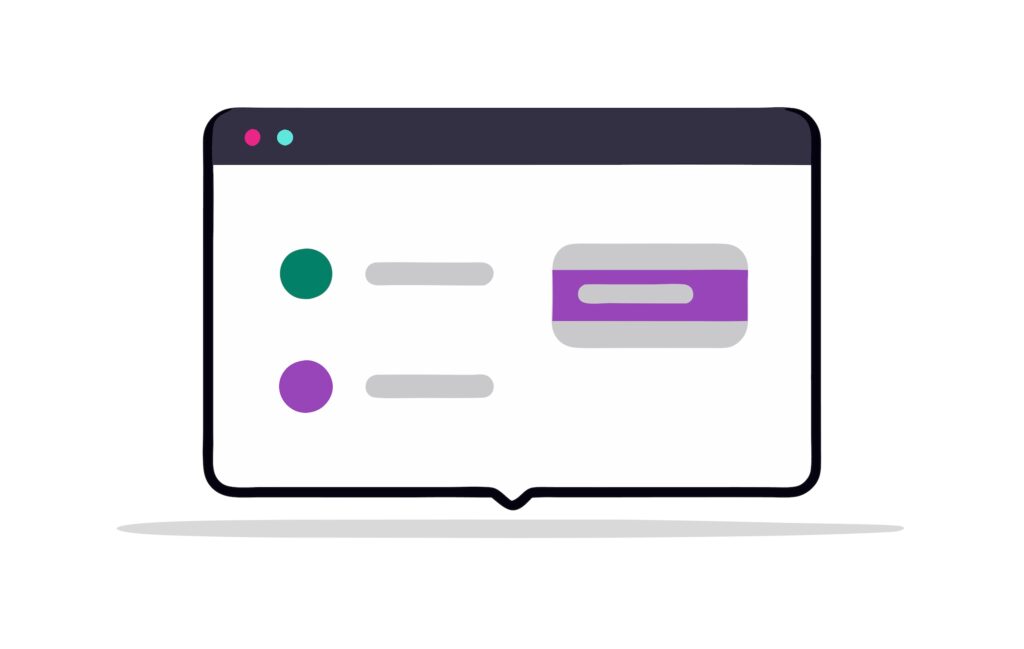The Conversion Tracking Nightmare That’s Costing You Money
Here’s a scenario that probably sounds familiar: You’re running ads, driving traffic to your WordPress site, and collecting leads through your carefully crafted Gravity Forms. But when it comes to actually tracking which ads are working and which forms are converting best? You’re flying blind.
Maybe you’ve tried setting up Google Analytics goals, only to get lost in a maze of code snippets and configuration screens. Or perhaps you’ve installed three different tracking plugins, each handling a piece of the puzzle, but none giving you the complete picture you need.
The brutal truth? Most WordPress users are losing thousands of dollars in wasted ad spend simply because they can’t track their conversions properly. And it’s not their fault – conversion tracking has traditionally been way more complicated than it should be.
But here’s the good news: there are solutions that eliminate all that technical complexity. And if you’re using Gravity Forms (which, let’s be honest, you should be), there’s one solution that stands head and shoulders above the rest.
Why Conversion Tracking Actually Matters for Your Gravity Forms
Before we dive into solutions, let’s talk about what you’re really missing when you don’t have proper conversion tracking set up.
When you’re not tracking conversions properly, you’re missing:
- Which traffic sources actually convert (spoiler: it’s probably not what you think)
- Where people are dropping off in your forms (that optional phone number field might be killing your conversions)
- The real ROI of your marketing efforts (are those expensive keywords worth it?)
- Optimization opportunities (small tweaks that could double your conversion rate)
And here’s what makes Gravity Forms users special: your forms are often the most critical conversion point on your entire website. Whether someone fills out your contact form, downloads your lead magnet, or signs up for your webinar – that’s where the magic happens.
The Current WordPress Conversion Tracking Landscape (And Why It’s Frustrating)
Let’s be real about the current options out there. I’ve tested several conversion tracking solutions for WordPress, and here’s what the landscape looks like:
The Heavy Hitters
MonsterInsights is the 800-pound gorilla with over 1 million active installs. It’s solid, reliable, and integrates well with Google Analytics. But here’s the thing – it still requires quite a bit of setup for advanced conversion tracking, and you’re pretty much locked into the Google ecosystem.
Pixel Manager for WooCommerce has impressive reviews (4.9 out of 5 stars) and works great if you’re running an eCommerce store. But if you’re using Gravity Forms for lead generation, membership signups, or anything beyond selling products, you’re out of luck.
Official Gravity Forms Add-ons like the Google Analytics add-on and Google Ads Tracker work, but you need separate add-ons for each platform you want to track. Want to track Facebook ads AND Google ads AND your analytics? That’s three different add-ons to manage.
The Real Problem
The current solutions either:
- Require technical knowledge you don’t have
- Lock you into a single platform
- Need multiple plugins to get the job done
- Still leave gaps in your tracking
Enter Conversion Bridge: The Game Changer
This is where things get interesting. Conversion Bridge takes a completely different approach to conversion tracking – one that actually makes sense.
Instead of being just another analytics plugin, it acts like “Zapier for conversion tracking.” With tons of integration combinations, it connects 58 WordPress plugins to 16 analytics platforms and 8 advertising platforms.

But here’s what makes it special for Gravity Forms users:
Zero Technical Setup Required
Remember those code snippets you were supposed to paste into your theme files? Forget about them. Conversion Bridge handles everything with simple toggles.
It Actually Works With Everything You’re Already Using
Whether you’re tracking in Google Analytics, Facebook Pixel, Google Ads, or even privacy-focused platforms like Plausible or Fathom Analytics, Conversion Bridge handles them all simultaneously.
Perfect for Agencies (Or Anyone Managing Multiple Sites)
If you’re managing multiple websites or client sites, this is where Conversion Bridge really shines with its ability to be reused across all sites regardless of the plugins or analytics platforms being used.
How Conversion Bridge Transforms Gravity Forms Tracking
Okay, let’s get into the nitty-gritty of what makes Conversion Bridge so perfect for Gravity Forms users. I’ve been testing this combination for months, and honestly, it’s like they were made for each other.
The Setup That Actually Makes Sense
Here’s how simple it really is: You install Conversion Bridge, connect your analytics platforms (literally just entering your tracking IDs), and then toggle on Gravity Forms tracking. After that, you can enable tracking for each form from the form settings tab and complete a couple of inputs.

There is no copying and pasting code into individual forms. No wondering if you set up the goals correctly in Google Analytics. And the Conversion Bridge documentation clear and easy ot follow, if you do need some guidance.
What You Actually Get to Track
Once it’s set up, here’s the kind of data you’ll have access to:
- Form starts vs. completions (finally understand your abandonment rate)
- Which traffic sources convert best (stop wasting money on channels that don’t work)
- Page-by-page customer journeys (see exactly how people navigate before converting)
- Custom event tracking (track downloads, video views, scroll depth – whatever matters to your business)
The Multi-Platform Magic
Here’s where Conversion Bridge really shines. Let’s say you’re running Google Ads, Facebook Ads, and you want to track everything in both Google Analytics and a privacy-focused tool like Plausible Analytics.
With traditional setups, you’d need:
- Google Analytics plugin
- Facebook Pixel plugin
- Google Ads conversion tracking code
- Plausible Analytics plugin
- Custom code to make sure Gravity Forms talks to all of them
With Conversion Bridge? You toggle on the platforms you want, and it handles all the cross-platform communication automatically.
Conversion Bridge vs. The Competition: The Real Comparison
Let me be honest about the alternatives, because I believe in giving you the full picture.
MonsterInsights: The Established Player
MonsterInsights is solid. Really solid. If you’re happy living entirely in the Google ecosystem and don’t mind a bit of setup complexity, it’ll serve you well.
Where it falls short:
- Limited to Google Analytics (mostly)
- Requires separate configuration for advanced form tracking
- No built-in support for privacy-focused analytics
- Agency licensing gets expensive fast
Where it wins:
- Huge user base and community
- Excellent Google Analytics integration
- Regular updates and support
Official Gravity Forms Add-ons: The Specialized Approach
The official Google Analytics and Google Ads add-ons from Gravity Forms work exactly as advertised. They’re reliable, well-supported, and integrate seamlessly.
The problem? You need a different add-on for each platform. Want to track Facebook conversions too? That’s another add-on. Want to use Plausible Analytics for privacy compliance? You’re out of luck.
Where they work well:
- Single-platform tracking needs
- Users who prefer official solutions
- Simple, straightforward setups
Where they fall short:
- Multi-platform tracking requires multiple add-ons
- Limited analytics platform support
- No unified dashboard or reporting
Pixel Manager for WooCommerce: The eCommerce Specialist
If you’re running a WooCommerce store, Pixel Manager is fantastic. It has 4.9/5 stars for a reason – it handles eCommerce tracking beautifully.
But here’s the thing: It’s built for product sales, not lead generation. If your Gravity Forms are collecting leads, signups, or anything that isn’t a direct product purchase, you’ll need additional solutions.
The Real-World Scenarios Where Conversion Bridge Wins
Let me paint you some pictures of when Conversion Bridge becomes the obvious choice:
Scenario 1: The Multi-Channel Marketer
Meet a digital marketing agency that needs to track:
- Google Ads conversions
- Facebook Ads conversions
- LinkedIn Ads conversions
- Google Analytics goals
- Client-preferred analytics (some want Plausible for privacy)
With traditional solutions: You’d need 5+ different plugins, custom code, and constant maintenance across multiple client sites.
With Conversion Bridge: One plugin, toggle on the platforms needed per client, done.
Scenario 2: The Privacy-Conscious Business Owner
A consulting business in Europe needs GDPR-compliant analytics. They want to use Plausible Analytics instead of Google Analytics, but still need to track Google Ads conversions.
Traditional approach: Custom code integration, potential compliance issues, ongoing maintenance headaches.
Conversion Bridge approach: Toggle on Plausible Analytics and Google Ads tracking. Everything works together automatically.
Scenario 3: The Growing Business
A business started with just Google Analytics but now wants to expand to Facebook Ads, add conversion tracking for email signups, and maybe test some privacy-focused analytics tools.
Traditional approach: Add new plugins for each platform, hope they don’t conflict, and manage multiple configurations.
Conversion Bridge approach: Toggle on new platforms as needed. Everything integrates seamlessly with existing Gravity Forms.
Alternative Solutions: When They Actually Make Sense
Look, I’m not going to tell you Conversion Bridge is perfect for everyone. There are scenarios where other solutions might make more sense:
Stick with MonsterInsights if:
- You’re 100% committed to the Google ecosystem
- You only need basic conversion tracking
- You’re already heavily invested in their paid add-ons
- You have a developer who can handle the technical setup
Use Official Gravity Forms Add-ons if:
- You only need to track one platform (like just Google Analytics)
- You prefer official solutions over third-party plugins
- Your tracking needs are very simple and straightforward
- Budget is extremely tight (though the time savings with Conversion Bridge often justify the cost)
Consider Pixel Manager if:
- You’re running a pure eCommerce site with WooCommerce
- Your Gravity Forms are only for customer service, not lead generation
- You don’t need lead tracking, just product sales tracking
The Investment: What Conversion Bridge Actually Costs (And Why It’s Worth It)
Let’s talk money. Because I know that’s what you’re thinking about right now.
Conversion Bridge isn’t free, and I’m not going to pretend it is. But when you break down what you’re actually getting versus the alternatives, the math gets pretty interesting.
The Pricing Breakdown
Solo Plan: $79/year
Perfect if you’re running a single website and want to eliminate conversion tracking headaches forever. That’s less than $7 per month to never worry about tracking setup again.
Studio Plan: $179/year
This is the sweet spot for most agencies and freelancers. Up to 10 websites, which means you can standardize your tracking approach across all your client sites.
Max Plan: $299/year
For agencies managing tons of sites or enterprises with complex needs. Max licenses, 150 sites, for all those client sites.
All plans come with a 14-day money-back guarantee, which honestly removes most of the risk from trying it.

The Real Cost Comparison
But here’s where it gets interesting. Let me show you what the “cheaper” alternatives actually cost:
The DIY Approach:
- Your time setting up tracking: 4-6 hours per site
- Developer time if you get stuck: $100-200 per hour
- Ongoing maintenance and troubleshooting: 2-3 hours per month
- Hidden cost: Missed conversions due to broken tracking
The Multiple Plugin Approach:
- MonsterInsights Pro: $99/year (starting price)
- Facebook Pixel plugin: $50/year
- Additional form tracking plugin: $40/year
- Privacy analytics plugin: $60/year
- Total: $249/year (only $50 less than Conversion Bridge Max, but way more complexity)
What You’re Really Buying
When you invest in Conversion Bridge, you’re not just buying a plugin. You’re buying:
- Time back in your life (no more wrestling with tracking codes)
- Confidence in your data (knowing your tracking actually works)
- Scalability (add new platforms without starting over)
- Future-proofing (new integrations added regularly)
- Peace of mind (reliable support when you need it)
Making Your Decision: The Framework That Works
Okay, decision time. Here’s how I recommend thinking about this:
Choose Conversion Bridge if:
- You want conversion tracking that just works without technical hassle
- You’re using (or planning to use) multiple analytics/advertising platforms
- You value your time more than saving a few dollars
- You want to scale your tracking approach across multiple sites
- You’re tired of cobbling together multiple plugins that may or may not work together
Stick with alternatives if:
- You only need very basic tracking on a single platform
- You have a developer who enjoys managing complex tracking setups
- You’re running a pure eCommerce site and only need product sales tracking
- Budget is more important than time savings
The Gut Check Question
Here’s the question that usually makes the decision clear:
“How much money are you potentially losing right now because you can’t accurately track which marketing efforts are actually working?”
For most businesses, that number is way higher than $79-299 per year.
Getting Started: Your Risk-Free Next Steps
If you’ve made it this far, you’re probably ready to try Conversion Bridge. Here’s exactly what I recommend:
The 14-Day Test Drive
- Grab the Solo plan ($79/year with 14-day money-back guarantee)
- Install it on your site (takes 5 minutes)
- Set up tracking for your most important conversion (your main Gravity Form)
- Run it for a week and see what data you get
- If it doesn’t blow your mind, get your money back
What to Look For During Your Test
- Ease of setup (it should be ridiculously simple)
- Data accuracy (compare with your current tracking)
- Platform integration (test with your main analytics tools)
- Support quality (reach out with a question and see how fast they respond)
The Bottom Line: Why Conversion Bridge is the Clear Choice for Gravity Forms Users
Look, I’ve tested pretty much every conversion tracking solution out there. I’ve wrestled with Google Tag Manager configurations, managed multiple tracking plugins, and dealt with the frustration of broken tracking more times than I care to count.
Here’s what I know for sure:
Conversion tracking shouldn’t be the hardest part of running your WordPress site. It should be simple, reliable, and comprehensive. It should work with whatever analytics platforms you prefer, scale with your business, and not require a computer science degree to set up.
Conversion Bridge delivers on all of that, especially for Gravity Forms users.
With the possibility of 1,392 integration combinations connecting 58 WordPress plugins to 16 analytics platforms and 8 advertising platforms, it’s truly like having Zapier for conversion tracking – and it’s the only WordPress analytics plugin you need in your stack.
Your Next Move
You have two choices:
- Keep struggling with your current tracking setup (or lack thereof), losing valuable conversion data and potentially wasting money on marketing that doesn’t work.
- Try Conversion Bridge risk-free for 14 days and see what proper conversion tracking can do for your business.
The choice seems pretty obvious to me.
Get Conversion Bridge now with 14-day money-back guarantee
Your future self (and your marketing budget) will thank you.




